100th Anniversary Great Nave Tour at the Cathedral of St. John the Divine
Celebrate the 1925 construction of the stunning nave inside the world's largest Gothic cathedral!


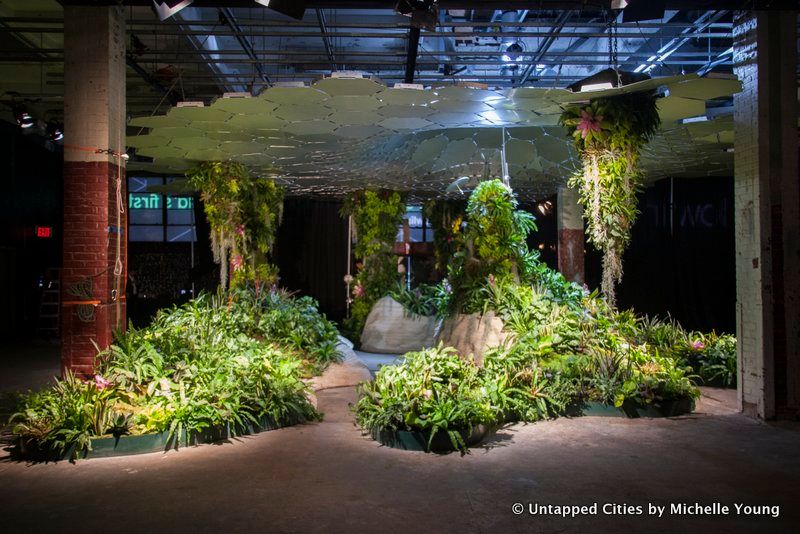
By 2020, Dan Barasch and James Ramsey hope to have broken ground on the “world’s first underground park” – the Lowline – a one-acre former trolley terminal on the Lower East Side, illuminated using technology that captures and transmits sunlight from above. Until then, you can check out the Lowline Lab, a 1,100-square-foot mock-up of the planned park, open every weekend until March of next year in an abandoned market building at 140 Essex Street. This past week, Untapped Cities got a preview walkthrough, and it’s stunning.
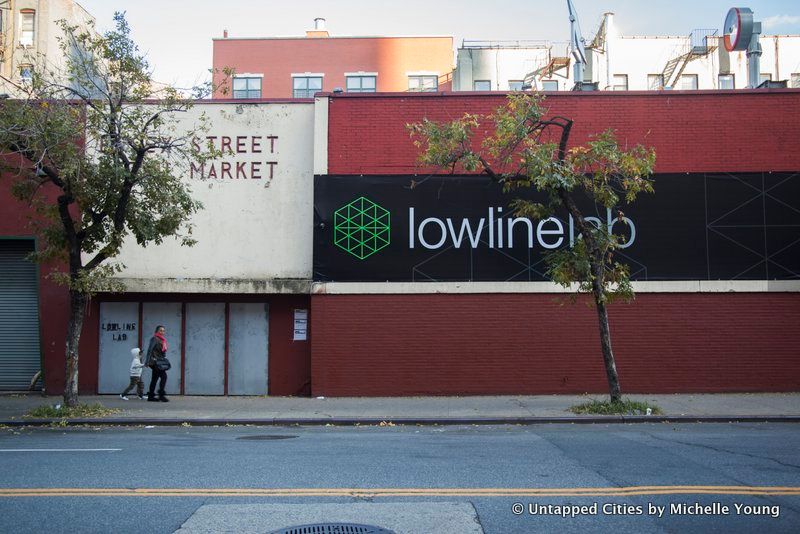
Made possible by around 2,500 backers pledging a combined $223,000 on Kickstarter, the lab aims to test the technology being developed to pipe natural light into a cavernous underground environment, as well as to determine which types of plant life can thrive under such conditions. So far, after only a week since installation, Lowline founders Barasch and Ramsey have been impressed by the initial measurements of interior sunlight. If you visit, the best natural light occurs between 10am and 4:30pm, before the sun ducks behind the Hotel on Rivington, and artificial lighting kicks in.
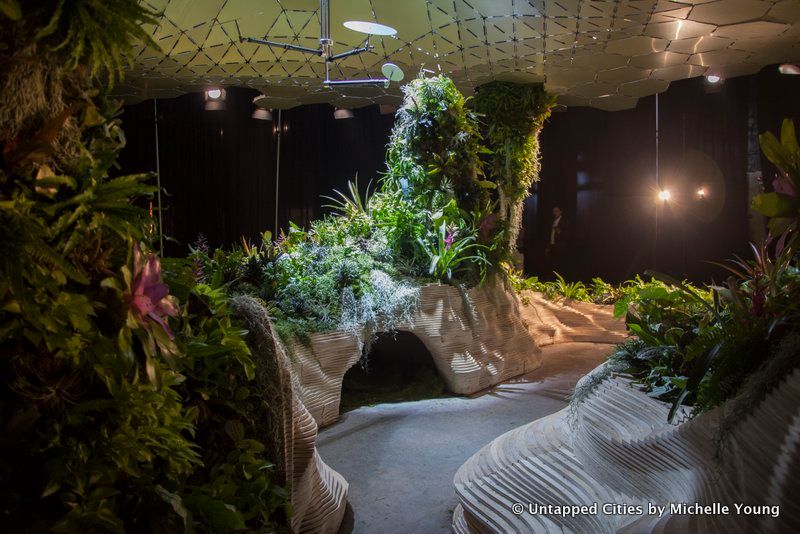
The idea for the park came in 2009, when Ramsey noticed a dark, unused expanse across the tracks from the Brooklyn-bound J/M/Z platform at the Essex/Delancey Street subway station. Opened in 1904 as the Manhattan terminus of the Williamsburg Bridge trolley, the Essex Street Trolley Terminal has been closed since 1948. Ramsey and Barasch hope to bring a futuristic technology to the exposed rail tracks, cobblestones and lofty 15-foot ceilings that remain a vestige of a forgotten era, all while bringing green space to a neighborhood severely lacking it.
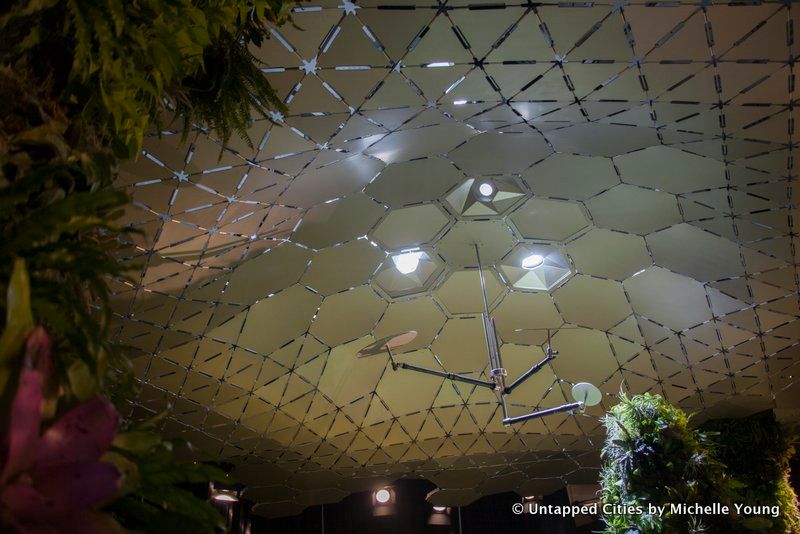
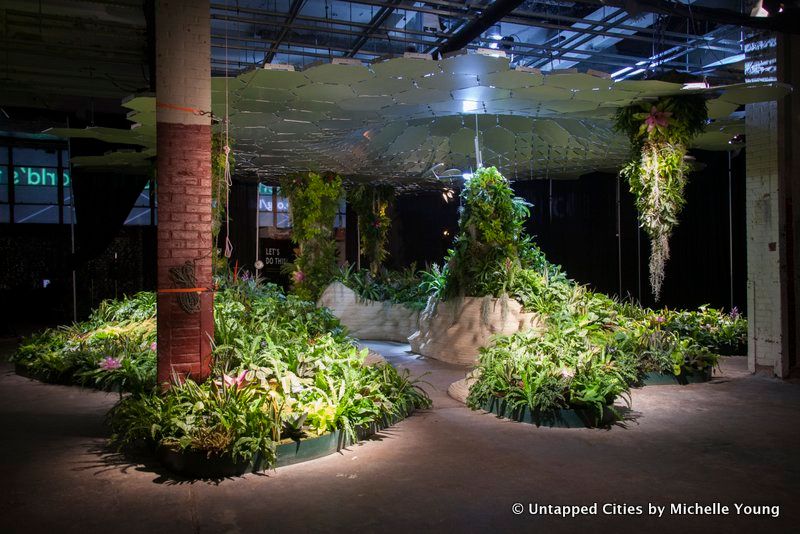
The Lowline Lab makes use of some preliminary technology that will help designers figure out how best to build the future Lowline. On the roof, parabolic mirrors concentrate sunlight into an intense beam 30 times the brightness of the sun, sending it through mirror-encased tubes to a multi-paneled ceiling canopy that then diffuses light evenly over the underground flora. This system needs to prove capable of allowing the subterranean plants to photosynthesize.
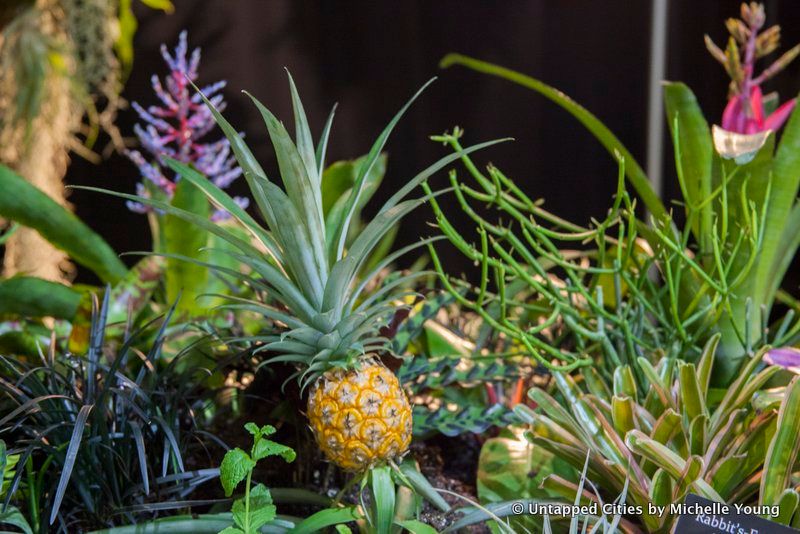
“The world’s most popular pineapple,” Barasch jokes
In the demonstration garden, visitors will find 3,000 plants of 50 unique varieties, including strawberries, pineapples, spearmint, lemon and thyme. Chosen by a team of experts, including help from the Brooklyn Botanic Garden, the plants range from hardy to delicate, based on several variables including temperature, humidity, light and water requirements. The organizers even invited a tree frog to dwell among the installation’s ferns and vines, in order to prove the mock-up’s ecological legitimacy. The underlying architecture of the test structure also has a miniature cave, lit up by tubes to enable growth below. Because the lab’s ultimate goal is to prepare for the park’s permanent iteration, some failure is expected and even welcome, Barasch says.
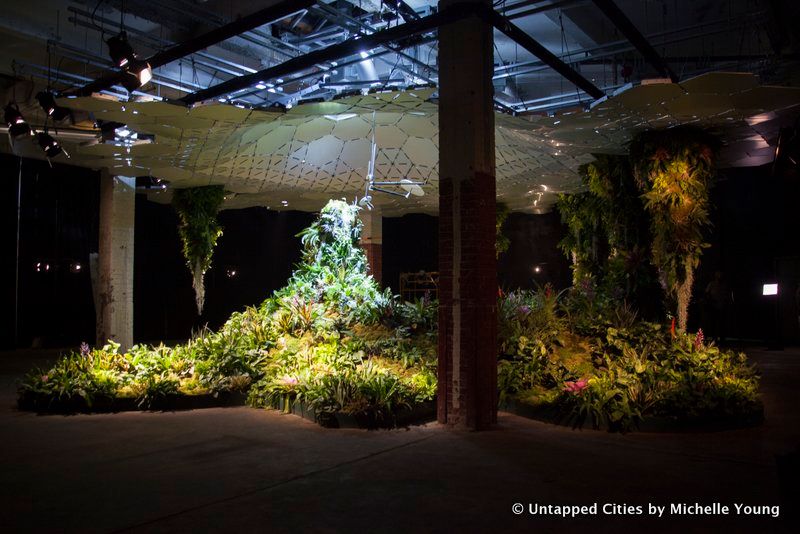
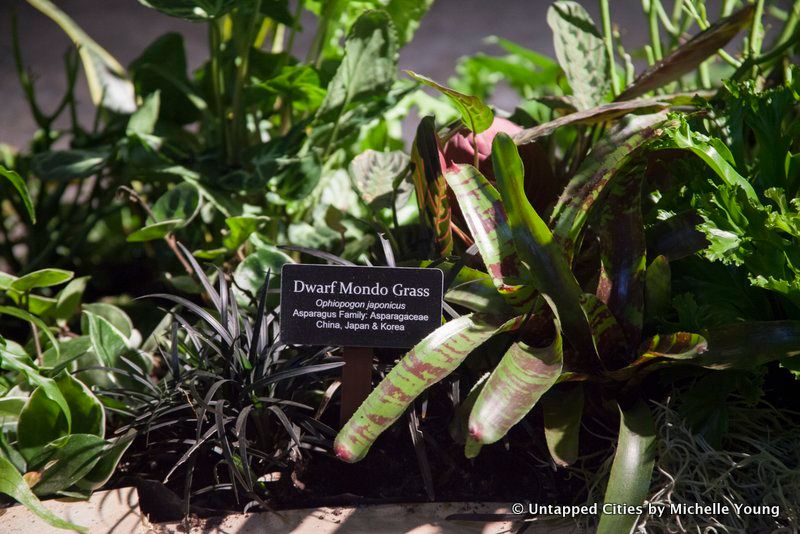
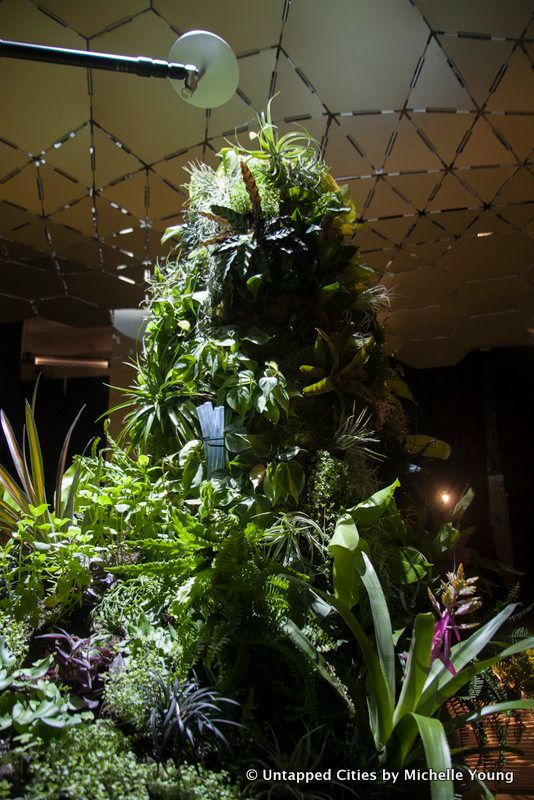
Another aim of the lab is to observe how it is used by the public and whether it has the potential to become a locus of social engagement and community pride. On weekdays, Barasch and Ramsey hope to host yoga and tai chi classes, as well as panels and any other fun event idea they might be approached with. There will be a Young Designers Program, which will bring in hundreds of local students to learn about plants, science and photosynthesis. One part of the warehouse space is dedicated to an exhibit that highlights the science behind the Lowline. They also plan to partner with the nearby Essex Street Market, an institution that is of particular importance to the Lowline as they are likely to be very close neighbors when the market moves into the massive Essex Crossing development already under construction on a six-acre site south of Delancey Street.
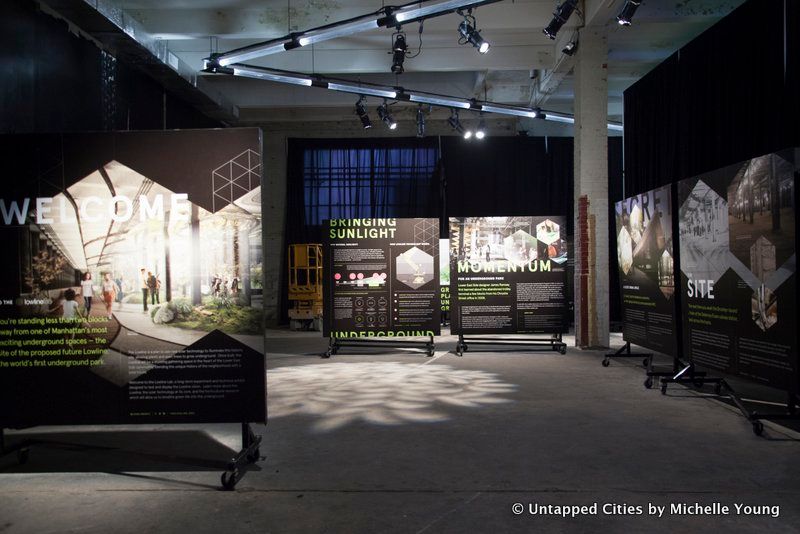
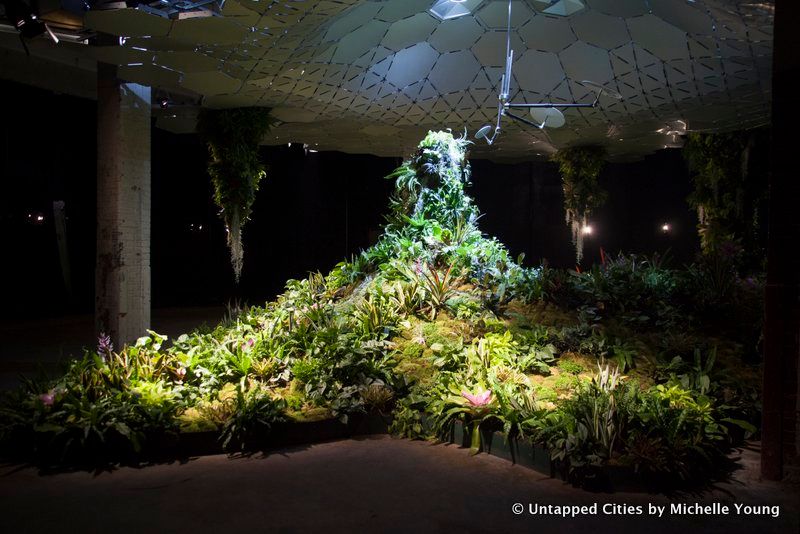
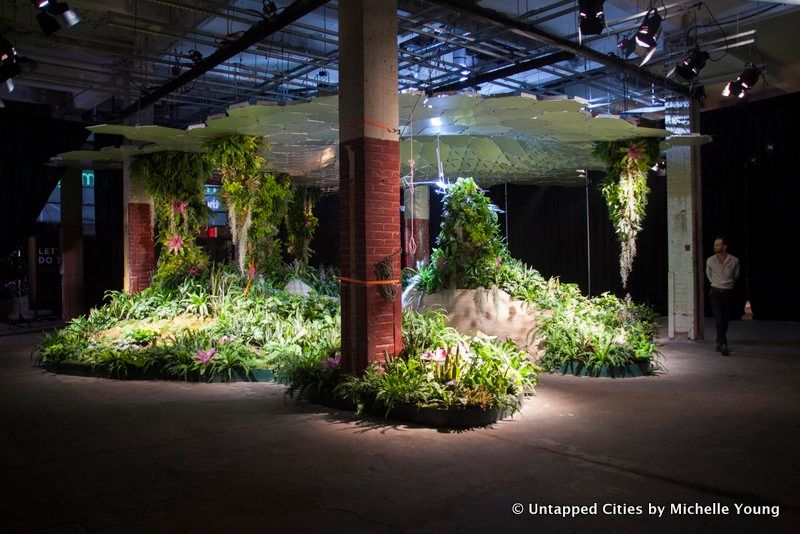
Come March, the founders hope to have a better idea of what works and what doesn’t, both in the high-tech mirror-and-tube system up above, and the very low-tech dirt-and-plant system below. Next, they’ll need to convince the MTA to begin the process of transferring the property into the hands of the Parks Department, all while keeping donors, elected officials and local residents convinced that an underground park is not just cool, but feasible. Whatever happens, the Lowline Lab presents a great opportunity to discover the past, present and future of the Lower East Side, and catch some much-needed wintertime rays while you’re at it.
Our upcoming exploration tour of the New York City subway system goes from past (the first subway line and what’s left of the station planned as the “Grand Central” of downtown), to present (inside the new Santiago Calatrava-designed Transportation Hub at World Trade Center and the Fulton Center oculus, to the future – at the Lowline Lab. While the earlier portions of the tour will be led by Untapped Cities tour guide Justin Rivers, the portion at the Lowline will be led by lab docents working directly with the space.
They will walk you through the science behind what they hope will be the world’s first underground park, in an abandoned trolley terminal on Essex Street, and the live testing they’ve done in the lab space since last fall. This is an exciting chance to get an insider look into the Lowline Lab, whether you have visited or not.
Tickets here:
Underground Tour of the NYC Subway
Next, check out what the potential Lowline space currently looks like.
Subscribe to our newsletter